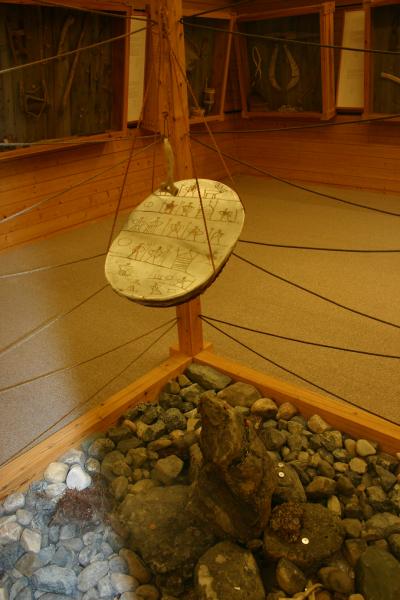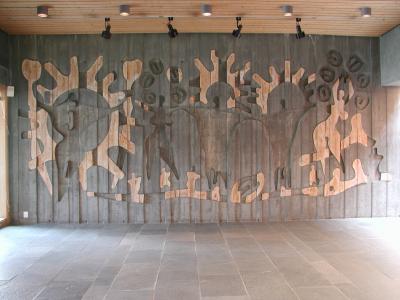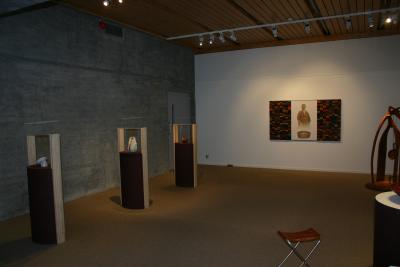Museums and difficult histories
The Sámi Collections - The sami museum (RDM-SVD), Karasjok, Norway
The question of how and where Sámi culture is best represented is a debated issue in Norway. Politically the problem may be seen as solved through the establishment of a Sámi national museum: The Sámi Collections (RiddoDuottarMuseat-Sámiid Vuorká-Dávvirat) in Karasjok, Northern Norway. The museum, which is run by Sámi people, sits administratively under the Sámi Assembly. Established in the early 1970s, the museum is rooted in the ethno-political mobilisation of the period, and the museums can be seen as being founded in the Sámi desire to reclaim their own history. The museum has, along with other Sámi museums, been subjected to considerable criticism. Historians and archaeologists have pointed to the way the cultural history display in the museum presents Sámi culture without any sense of sense of change, with historical sequences and chronology. As a result of this lack of historical anchoring, it is argued, the display provides an image of a static, pre-modern Sámi culture; by stripping the Sámi culture of chronological time and historical development, the display reproduces ethnographic stereotypes of peoples with and without history.
Is this an apt interpretation? A focus on the museum’s use of photography as well as the aesthetics of the museum display and exhibits of contemporary Sámi art, may suggest alternative readings. The exhibition space of this museum is divided in two different parts: a permanent exhibition of Sámi cultural history , and a white cube gallery area which presents temporary exhibitions of Sámi contemporary art.

In the cultural history display, photography is absent, in contrast to the art section where photography has gained something near to a dominant position. The cultural history display, as well as some art works – sculptures and reliefs in the entrance hall, is designed by the Sámi artist Iver Jåks.

Through his framing artworks and design, Jåks evokes Sámi mythology and establishes a connection between the Sami museum (RDM-SVD) and Sámi cosmological worlds. Far from replicating the exhibition language of dominant western ethnography, the display can be seen as an effort to undermine the conceptions of time and history of the dominant society. By evoking a mythical landscape through aesthetic means, the museum inscribes itself into a Sámi conception of time and space – a Sámi understanding of reality.
It is, of course, well-established that the history tends to belong to the dominant forces within a society, while the history of the minority tends to be defined in relation to those dominant forces. In this light, the exhibition may be seen as an effort to break also with dominant ways of structuring the past. The lack of chronological time as a prime organising principle of historical narration may be seen as alternative way of configuring the past - a way that distances itself from dominant historiography. What we get instead is a form of anti-history - or a transhistory. Thus, the exhibition could be seen as an effort to overcome, surpass or transcend time and the constraints imposed by time. An extended use of photography would have undermined this rhetoric. The indexical character of the medium would have added a dimension of time and space specificity and thus also evoked the notion of chronological time. It should be added that the curators expressed scepticism towards the use of colonial photography in this context. They also mentioned the iconoclastic attitude connected to the pietistic movement (Læstadianism) which is embraced by a large proportion of the Sámi population.
While the aesthetic framing of the cultural history exhibition establishes a connection to the art section, and as such also establishes a link between the past and the present, the photographs in the art section suggests an orientation towards the future. While the artworks may draw on the past and address issues of remembrance and loss, they also points to identity conflicts, tensions within the Sámi community in addition to the ongoing difficulties of the relation to the majority community, which for many among the Sámi population still is seen as a colonial force.
Sigrid Lien and Hilde Nielssen
